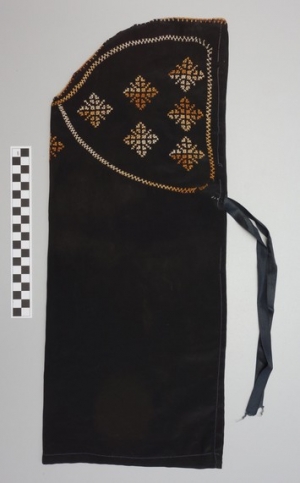Thesse monastic hoods are traditionally decorated with thirteen crosses; for the twelve apostles and for Christ. Such hoods were often embroidered by a senior monk/nun for his or her novice or disciple. From the later twentieth century, monastic hoods were made by monastic communities for sale to pilgrims and others. Monks are supposed to wear the hood night and day; for the liturgy, a separate qalansuwa has been developed which is white in colour (the traditional and basic colour of liturgical dress).
A comparable type of hood, called an eskema, is worn by Syriac Orthodox monks.
TRC online catalogue (retrieved 16 May 2021).
See Vogelsang-Eastwood, Gillian, Encyclopedia of Embroidery from the Arab World (London: Bloomsbury Publishers 2016, pp. 326-327, 330).
WV

